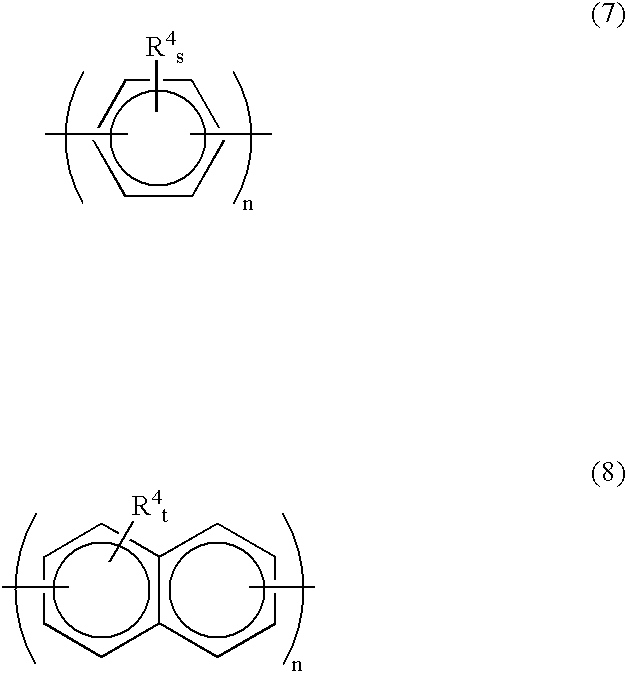Olefin polymerization catalysts and olefin polymer production methods using said olefin polymerization catalysts
a technology of olefin polymerization and catalyst, which is applied in the direction of catalyst activation/preparation, physical/chemical process catalyst, chemical/physical process, etc., can solve the problem that the characteristics cannot be considered to be sufficient, the titanium catalyst is not adequate in the polymerization activity, and the copolymerization activity is not adequate. , to achieve the effect of high copolymerization activity, high molecular weight and high yield
- Summary
- Abstract
- Description
- Claims
- Application Information
AI Technical Summary
Problems solved by technology
Method used
Image
Examples
example 1
Copolymerization of Ethylene and 1-Octene
1 Preparation of Reaction Product (f)
0.52 g (3.0 mmol) of vanadium oxytrichloride {compound (d)} was dissolved in 30 ml of dried n-hexane, and into this solution, the temperature of which was maintained at -50.degree. C., was dripped and mixed an n-hexane solution having 1.1 g (3.0 mmol) of 2,2'-thiobis(6-t-butyl-4-methylphenol) {compound (e)} dissolved therein. Thereafter, the temperature was raised gradually and stirring was performed for 9 hours at room temperature (20 to 25.degree. C.). The blackish-purple precipitate that was produced was then recovered by centrifugal separation and dried under vacuum to obtain a reaction product containing 1.3 g of reaction product (f).
The .sup.1 H-NMR (CD.sub.2 Cl.sub.2) measurement results for this reaction product are as follows:
7.28 ppm (s, 2H), 7.22 ppm (s, 2H), 2.34 ppm (s, 6H), and
TABLE 2
1.34 ppm (s, 18H).
example 2
Copolymerization of Ethylene and 1-Octene
Ethylene and 1-octene were copolymerized in the same manner as in 2 of example 1 with the exception that the usage amount of trimethylaluminum {compound (b)} was 50 .mu. mol, the usage amount of the reaction product obtained in 1 of the first example was 2.3 mg, and the usage amount of N,N-dimethylanilinium tetrakis(pentafluorophenyl)borate {compound (c)} was 10 .mu. mol. 16.3 g of polymer were obtained as a result. The 1-octene content of this polymer was 27.9 mol %, the Mw was 16.4.times.10.sup.5, and the Mw / Mn was 4.1.
example 3
Copolymerization of Ethylene and 1-Octene
Ethylene and 1-octene were copolymerized in the same manner as in 2 of example 1 with the exception that triisobutylaluminum was used in place of trimethylaluminum at a usage amount of 7.5 mmol. 5.4 g of polymer were obtained as a result. The 1-octene content of this polymer was 24.4 mol %, the Mw was 9.6.times.10.sup.5, and the Mw / Mn was 2.7.
PUM
| Property | Measurement | Unit |
|---|---|---|
| molecular weight distribution | aaaaa | aaaaa |
| temperature | aaaaa | aaaaa |
| temperature | aaaaa | aaaaa |
Abstract
Description
Claims
Application Information
 Login to View More
Login to View More - R&D
- Intellectual Property
- Life Sciences
- Materials
- Tech Scout
- Unparalleled Data Quality
- Higher Quality Content
- 60% Fewer Hallucinations
Browse by: Latest US Patents, China's latest patents, Technical Efficacy Thesaurus, Application Domain, Technology Topic, Popular Technical Reports.
© 2025 PatSnap. All rights reserved.Legal|Privacy policy|Modern Slavery Act Transparency Statement|Sitemap|About US| Contact US: help@patsnap.com



